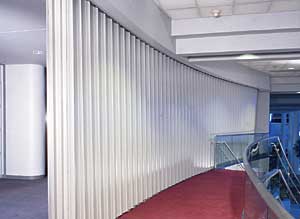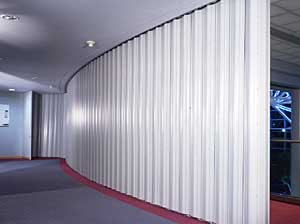Horizontal sliding-door Systems: Opening New Opportunities for Design Flexibility
The systems are well suited for museums that require this function and are in place at the Smithsonian and several dozen other museums, art institutes, and performing arts centers.
Airports face a similar but slightly more practical design challenge: they must accommodate the rapid movement of thousands of patrons while complying with life safety requirements and building security. Horizontal accordion-style sliding doors can emerge from recessed walls and seal off openings as large as 60 feet, as is the case at Orlando International Airport. The systems are in use at the major airports in New York, Washington, Chicago, Newark, Houston, Miami, and Los Angeles, as well as others.
|
Government facilities have seen a dramatically increased need for building security in the wake of the September 11, 2001 terrorist attacks on New York and Washington. At the Pentagon, where American Airlines Flight 77 slammed into the side of the building and killed 125 occupants, 38 horizontal accordion-style sliding doors were in place in the building's vast network of corridors.
They were there in part because conventional swinging doors at the end of long corridors were cumbersome for the electric carts that were used to transport paperwork and supplies. Some of these doors in the 26-foot-wide corridors had actually been chained open.
|
On September 11, the sliding-door systems took on new significance, activating instantly at the signal of alarm. One general recalled that he saw a fireball racing down a corridor and felt certain he would perish, but the horizontal sliding door drew shut, sealing off the inferno and allowing him to escape.
Courthouses that require free-flowing access for judges and attorneys but need to be similarly sealed off in a security emergency have also turned to the systems as a design solution.











